

April 5, 2018
Co-written by Goobie
We are back in the UK for the Easter holidays and Goobie gets to fulfill a long-standing dream – to meet The Flying Scotsman. But is The Flying Scotsman’s team ready to meet Goobie?
Anyone who has followed my blog for a while will know that I have a train-obsessed son. He’s been that way since someone gave him a Thomas the Tank Engine book when he was two. So it was quite hard for Goobie when we moved to Cyprus and he discovered that it doesn’t have a railway. It did once, though. Over the last three years we have travelled the length of the island looking for old locomotives. So far we have found five – in Lefke, Morphou, Famagusta, Kalavassos and Nicosia. Plus Goobie’s spent many a happy hour at the Cyprus Railways Museum in Evretou.
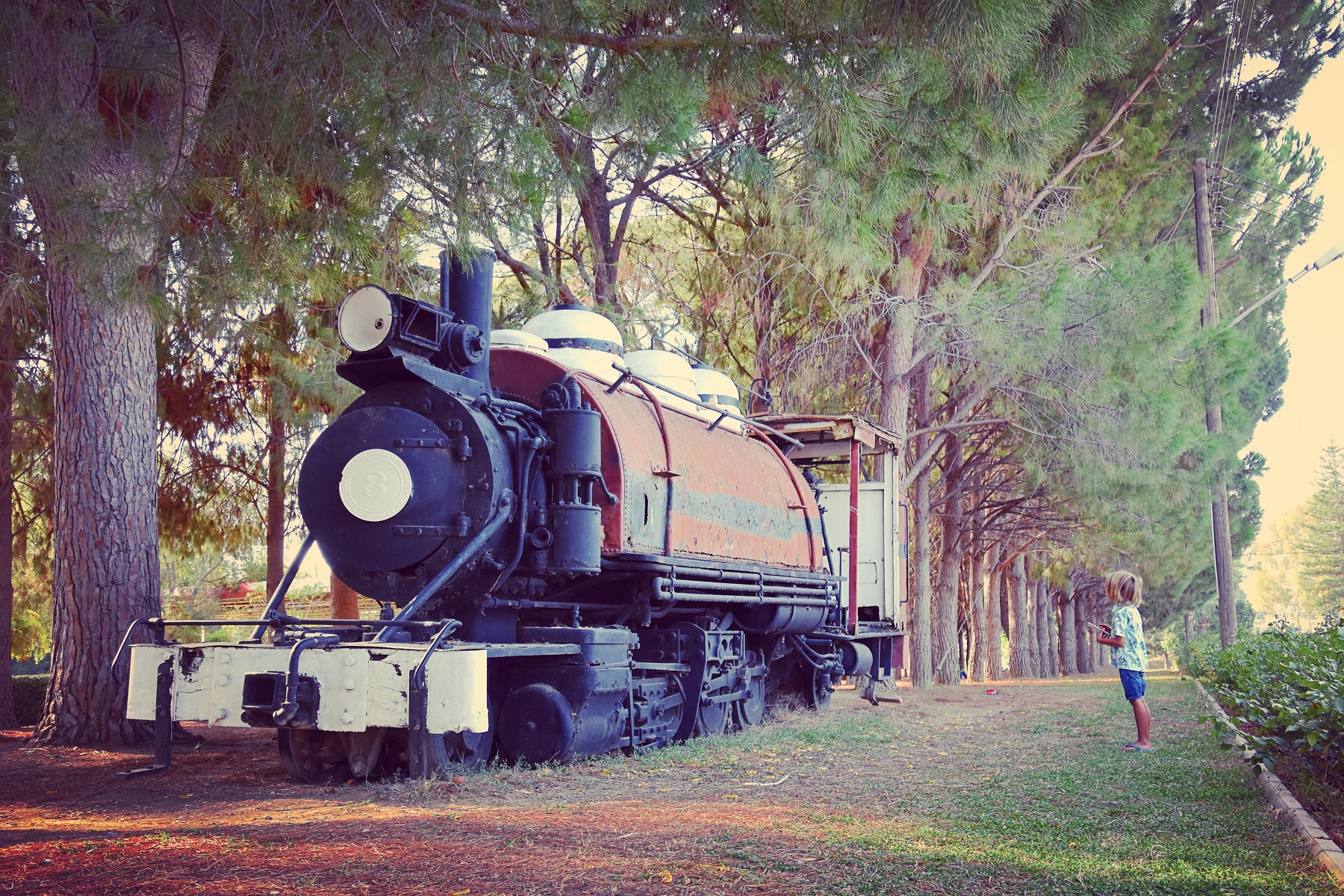
While in Cyprus, Goobie fuels his passion with his Hornby train set and spending his screen-time watching YouTube videos of similarly-obsessed people playing with their Hornby train sets.
The train he has most wanted to see is The Flying Scotsman, the world-famous 95-year-old engine that in 1934 was the first train to reach 100mph in the UK. He still talks about the trip to the National Railway Museum in York when he was three. He was surrounded by loco royalty, such as the Mallard, the Rocket and the Duchess of Hamilton. But there was one notable absence – The Flying Scotsman. It was undergoing a £4.5 million renovation to bring it back into action. A renovation that was completed in 2016. People can now pay hefty sums for trips on The Flying Scotsman. £200 per ticket last time we checked. Too much for us but we’d hoped Goobie might get to see The Flying Scotsman in a station one day.

Our trip to see The Flying Scotsman actually started in a cinema in Cyprus. We were watching Paddington 2 and there was a scene with a green locomotive chasing a red one (or was it the other way round?). Goobie shot up out of his seat.
‘That’s Tornado!’ he shouted. Heads turned. Tornado is another of Goobie’s favourite engines.
‘Are you sure?’ I whispered. ‘It looks like The Flying Scotsman to me.’
‘No Mummy,’ he said patiently. ‘The Flying Scotman has wind deflectors.’
Of course, he was right. A close-up shot two minutes later showed the train’s nameplate. It was Tornado.
We had an idea. If £600 was too much for us all to ride on The Flying Scotsman, perhaps we could go for a ride on Tornado instead. A Google search took us to the website of the East Lancashire Railway where, over the Easter holidays, they were running trips on Tornado. By sheer good luck, we then discovered that for just a few days, The Flying Scotsman would be on show at the same railway. You could pay £15 to look inside it. Trying to snap up tickets before they sold out was akin to getting hold of Glastonbury Festival tickets – difficult. But after stalking the ticket site for a few days, Matt managed to do it.
We headed up to Manchester straight after touching down in the UK. One of my best friends lives there and kindly invited us to stay for a couple of nights.
The big day arrived and we drove to Bury Bolton Street station, which is part of the 12.5-mile East Lancashire Railway. Goobie cheered every time he spotted a brown ELR sign on the way. I don’t think I’ve ever seen him so excited.
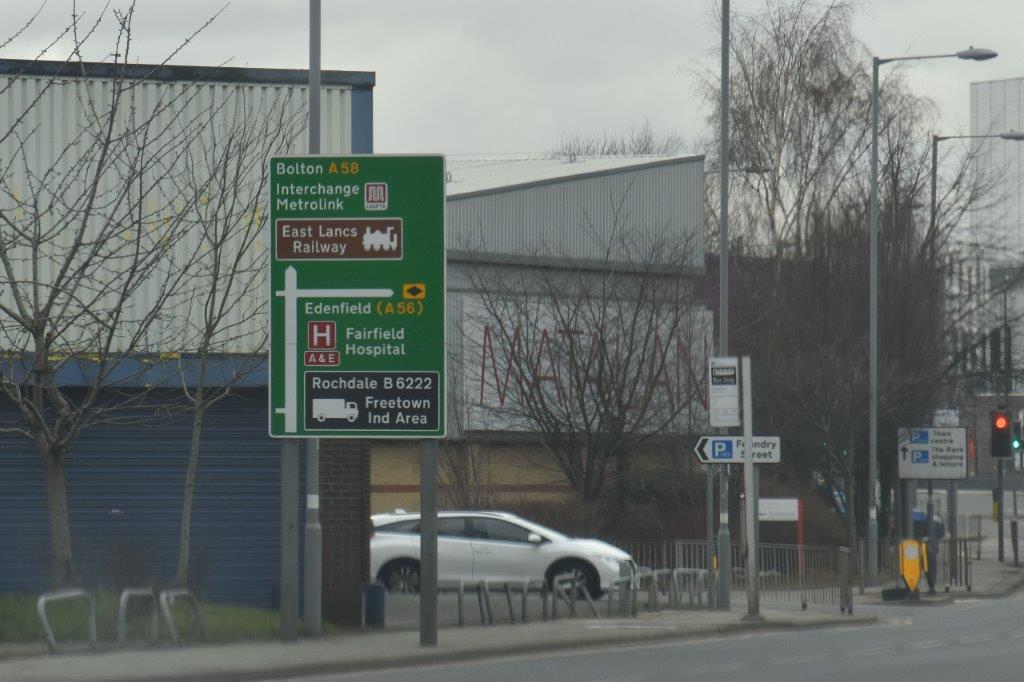
When we got there, I quickly realised that in Steam Train World, this was a BIG DEAL. Stalls selling train memorabilia lined the station and the platforms were packed with people, similar to London Charing Cross in the rush hour. There were photographers everywhere.
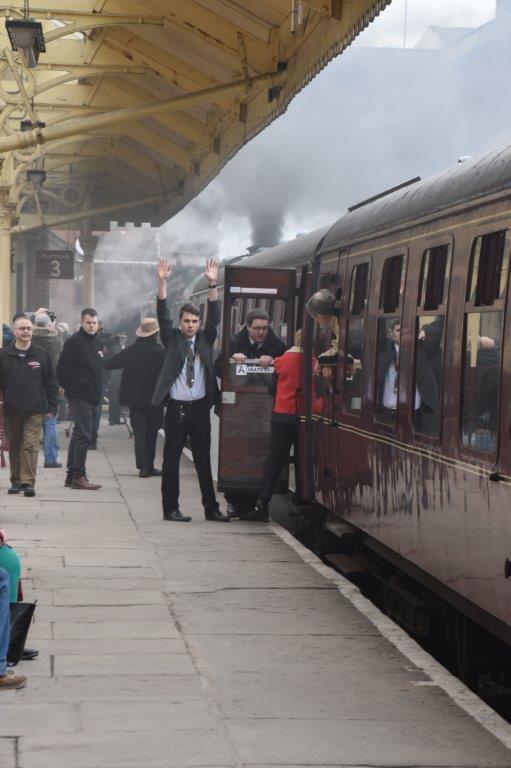
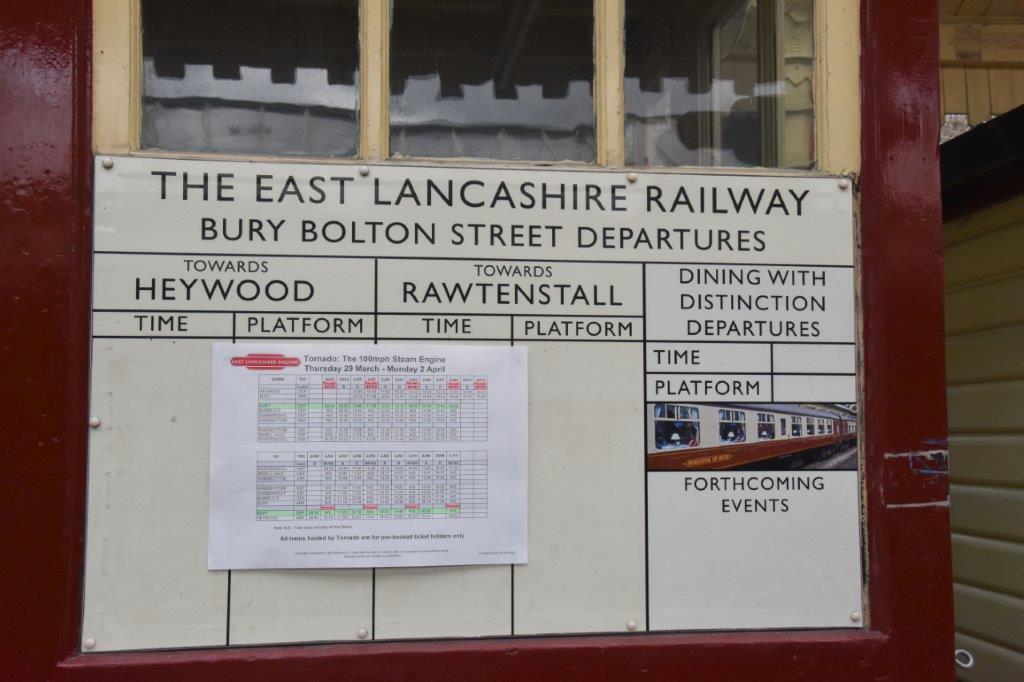
I also noticed that Tornado and The Flying Scotsman weren’t the only trains at this station. As we walked down the steps to Platform 3 we were greeted by the impressive Golden Arrow, or City of Wells loco. A big diesel called Captain Bill Smith swept past and we later saw the red engine that had been in Paddington 2 – The Crab, Goobie tells me.
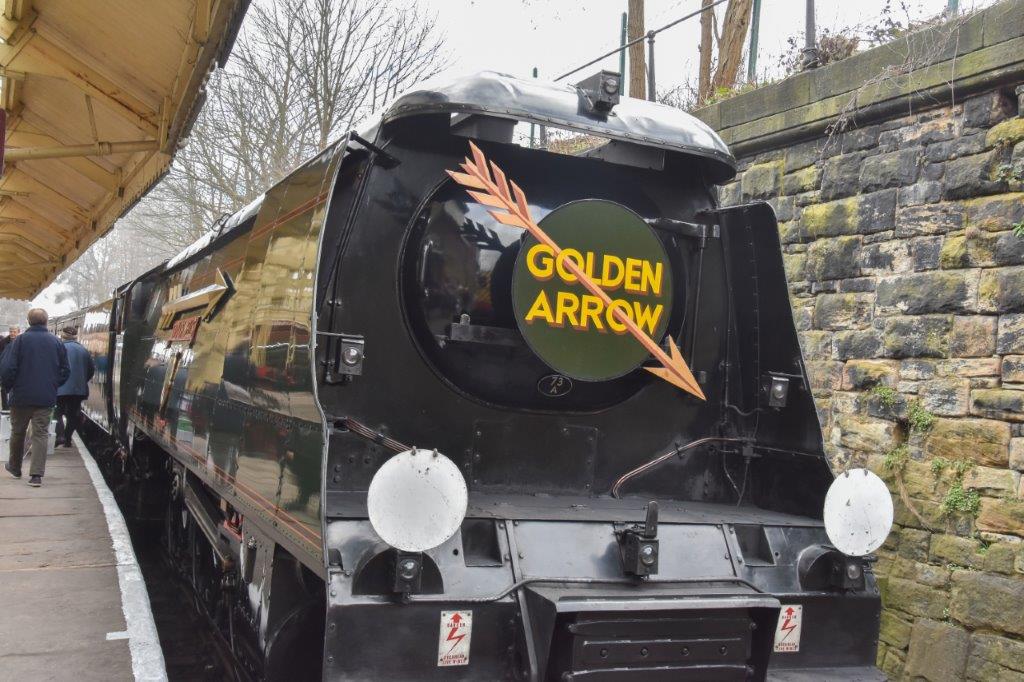
A frisson of excitement swept through Platform 3 as an overhead tannoy announced the arrival of Tornado. And in it steamed, a massive green engine pulling countless carriages. I’m not a train buff and don’t expect this post to delve very deeply into train technicalities, but Goobie’s excitement was contagious. Tornado was magnificent.
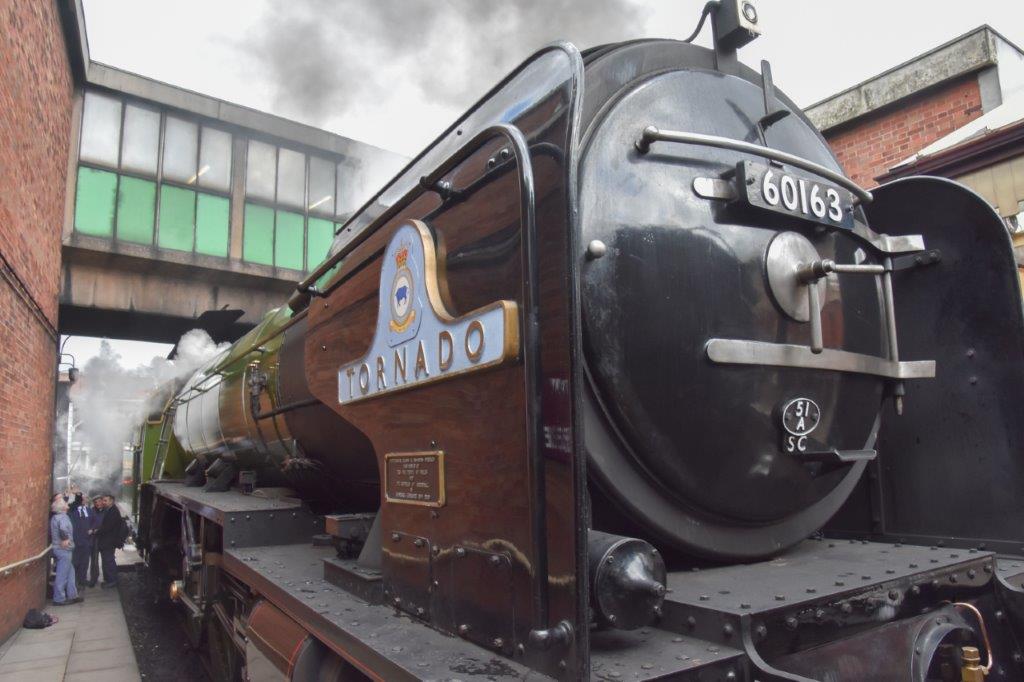
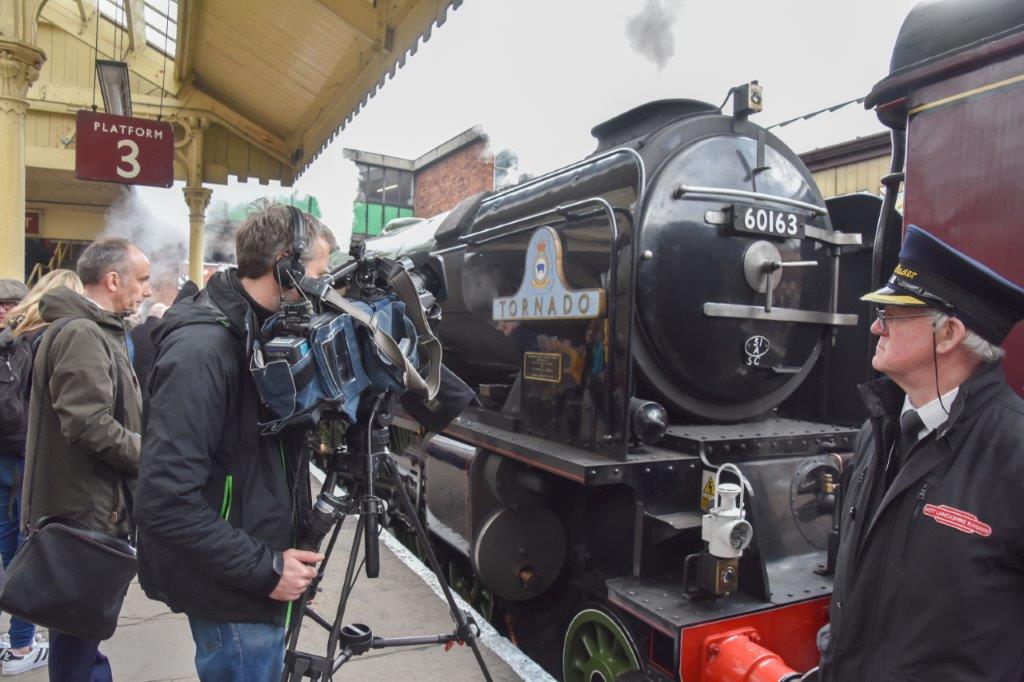
The interesting thing about Tornado is that it is only 10 years old. In 1990 some people decided they wanted to build a steam train from scratch and, after 18 years of hard work, Tornado made its first trip in 2008. And it became the first steam train to reach 100mph in 50 years.
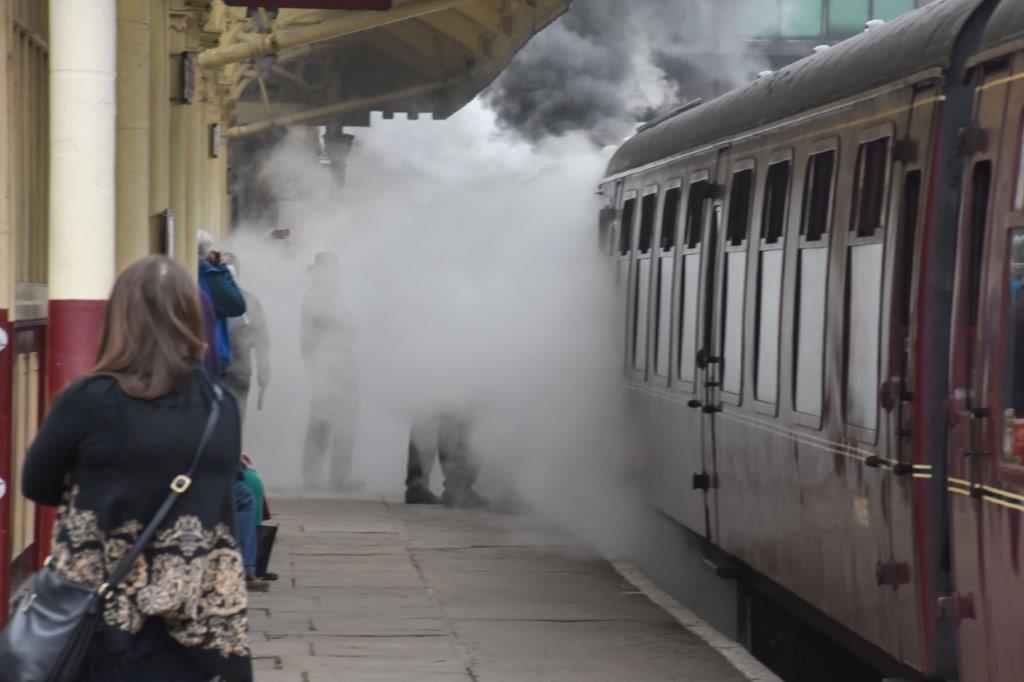
We hopped on board carriage C and found our seats next to a couple of lovely gents who filled the journey with friendly banter, their warm Lancashire accents making you feel like you’d known them for years.

Tornado took us out of Bury Bolton Street station, the red-bricked buildings of Bury opening out into green fields and rolling hills. We went past massive chimneys from the mining days, through farms, over crossings, a queue of traffic waiting for us to pass. People smiled and waved, touched by the magic of seeing a steam train thundering through the rainy countryside, billowing out massive clouds of steam. And still we kept seeing photographers, in sidings, on streets, big tripods perched precariously on hillsides. Train paparazzi.
Goobie was enchanted.
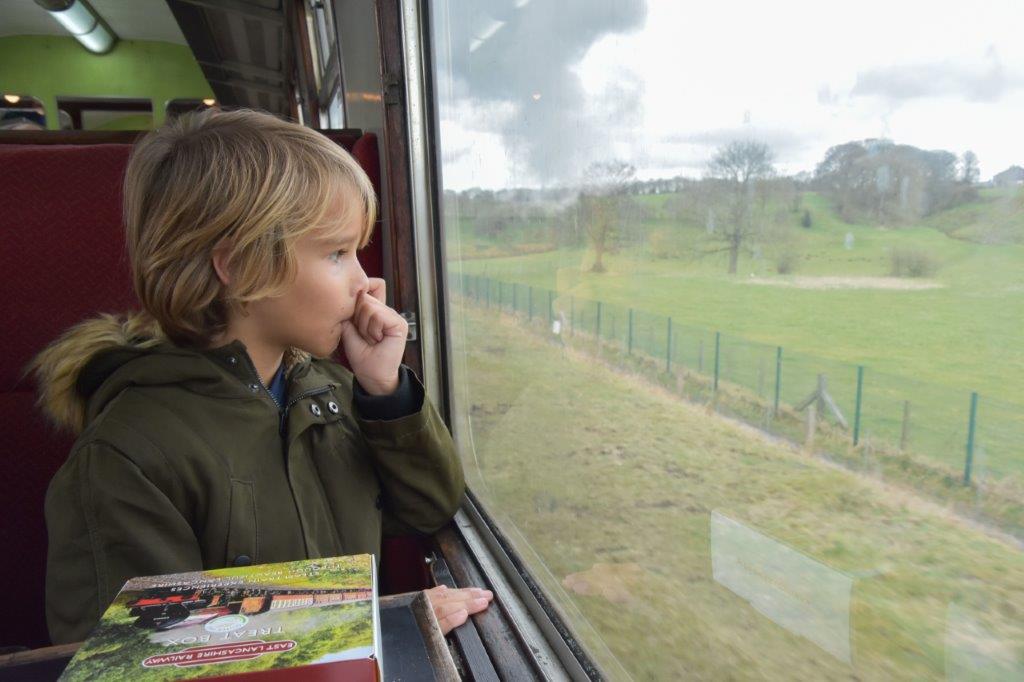
We ate scones out of ELR treat boxes and told Hercules (a nickname given to him by his older brother – after a smart little engine at the Romney, Hythe & Dymchurch Railway in Kent. Not the Greek god.) that he was a lucky boy to have his first ever train journey on such a brilliant train. Herc seemed to know, staring up in wonder at the trees flashing past the window.


We stopped a couple of times, crowding down the ends of the platforms to watch the engine be refilled with water and coupled up for our return trip to Bury. An hour-and-a-half after leaving, Tornado pulled us back into Bury Bolton Street station.
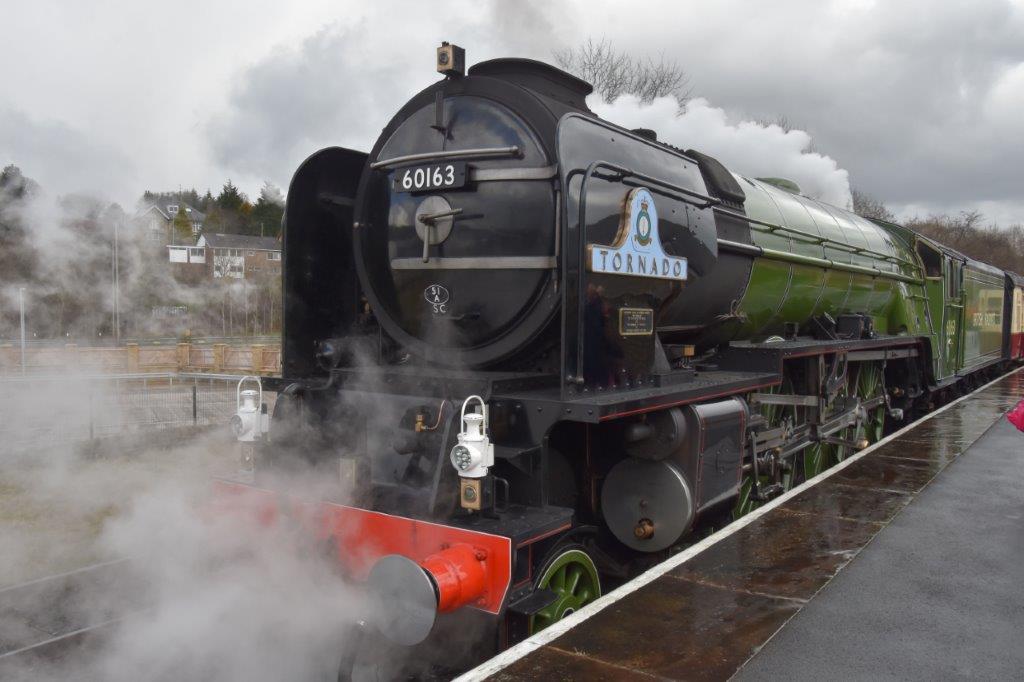
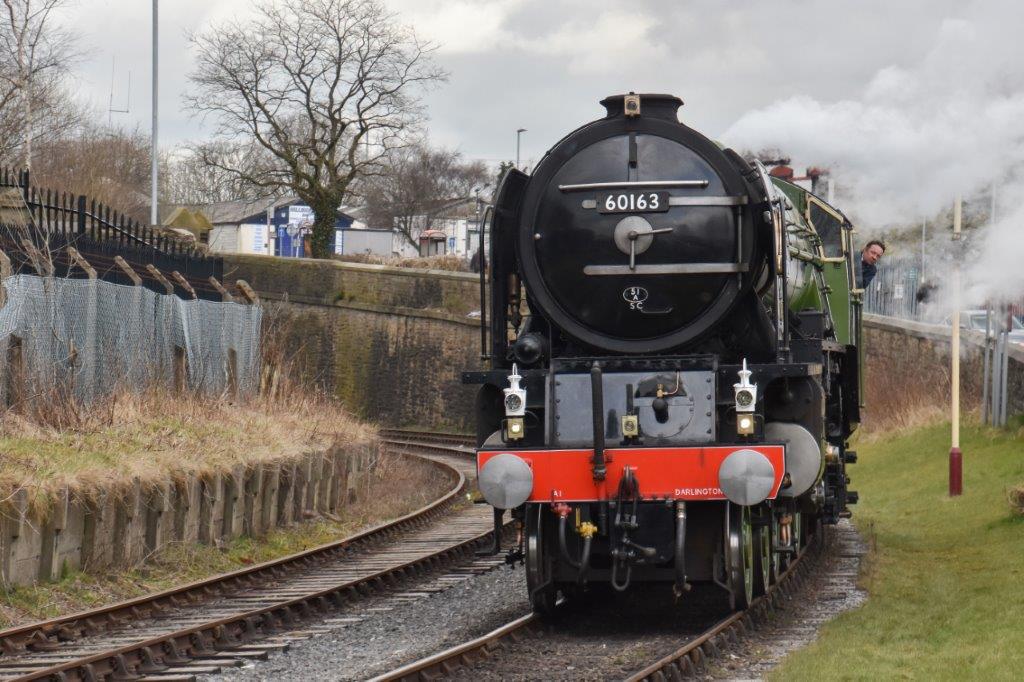
15 minutes after returning, it was time for the highlight of the day – Goobie was about to meet The Flying Scotsman.
The Flying Scotsman was stationed down the end of Platform 4, behind a building. As we approached, we breathed in the heady smell of soot and steam. Big grey clouds of steam shot intermittently into the sky. Its whistle pierced the air. It wasn’t going anywhere today, but The Flying Scotsman wanted everyone to know it was there.
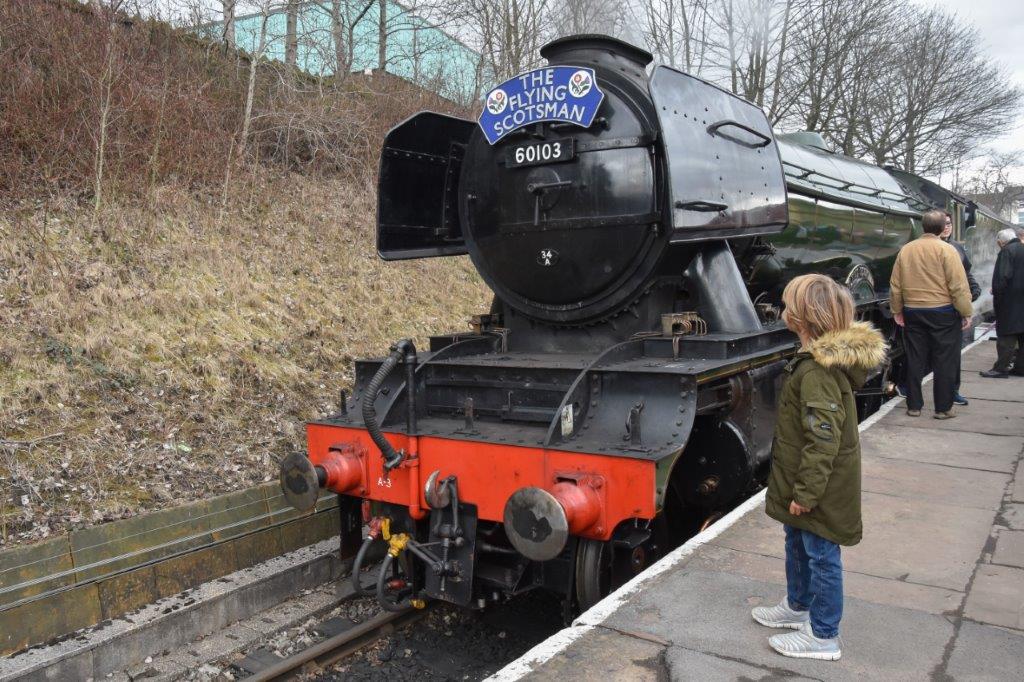
Goobie scooted ahead to look at the engine he’d waited over three years to meet. He was dwarfed by its tall green flanks, shining in the weak sunlight. On its sides, the golden letters of its name were just above Goobie’s head. I looked up and there were the famous black wind deflectors. We were in the presence of locomotive greatness.
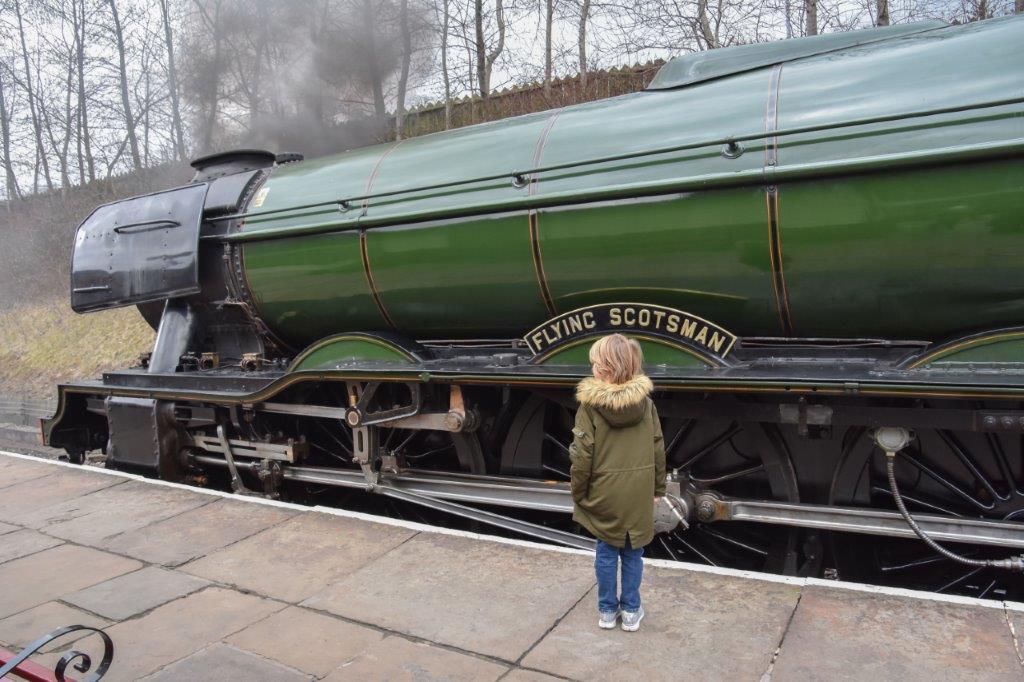
Goobie handed our tickets to a wizard-like ticket inspector and we were directed into a carriage compartment to await our guide. In the compartment were a group of 60-something gruff northern men, all excitedly discussing The Flying Scotsman. They were serious enthusiasts.
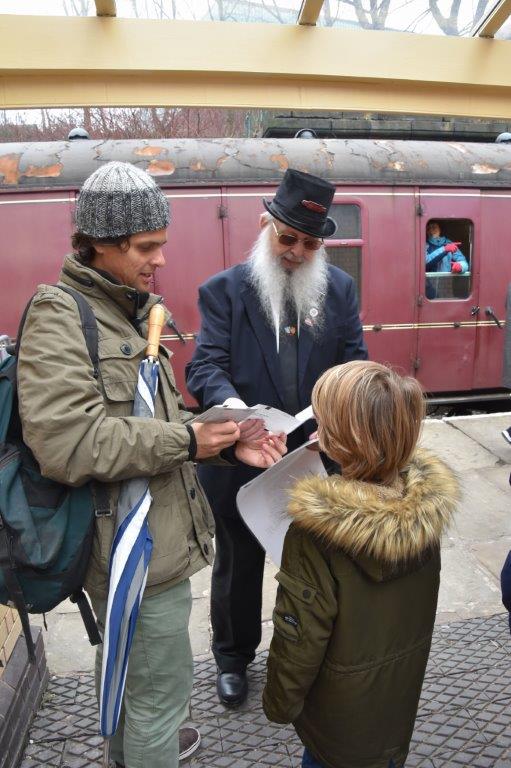
The guide came in and ran through the history of The Flying Scotsman.
Or tried to.
Two minutes in:
‘The Flying Scotsman’s tender-’
‘The Flying Scotsman actually has TWO tenders,’ pipes up the precocious voice of a six-year-old train geek.
Goobie’s eyes burned with a passion shared by everyone in the compartment. Except me, Matt and Herc.

The guide tried to continue:
‘In 1969, The Flying Scotsman went to America-’
‘Its wind deflectors were cut off!’
The guide looked at Goobie. ‘Yes! But did you know that, while in America, The Flying Scotsman had a cow-catcher and bell put on it?’
‘Yes, yes, yes,’ said Goobie in an imperious tone that only six-year-olds can nail.
One of the 60-something men looked at me in surprise. ‘He’s very sharp,’ he said, impressed.
And so it continued. Goobie and the guide informed us that The Flying Scotsman has a unique tender with a narrow corridor running through it. This was so that the train crew could change over without having to stop the train, allowing it to travel from London to Edinburgh non-stop.
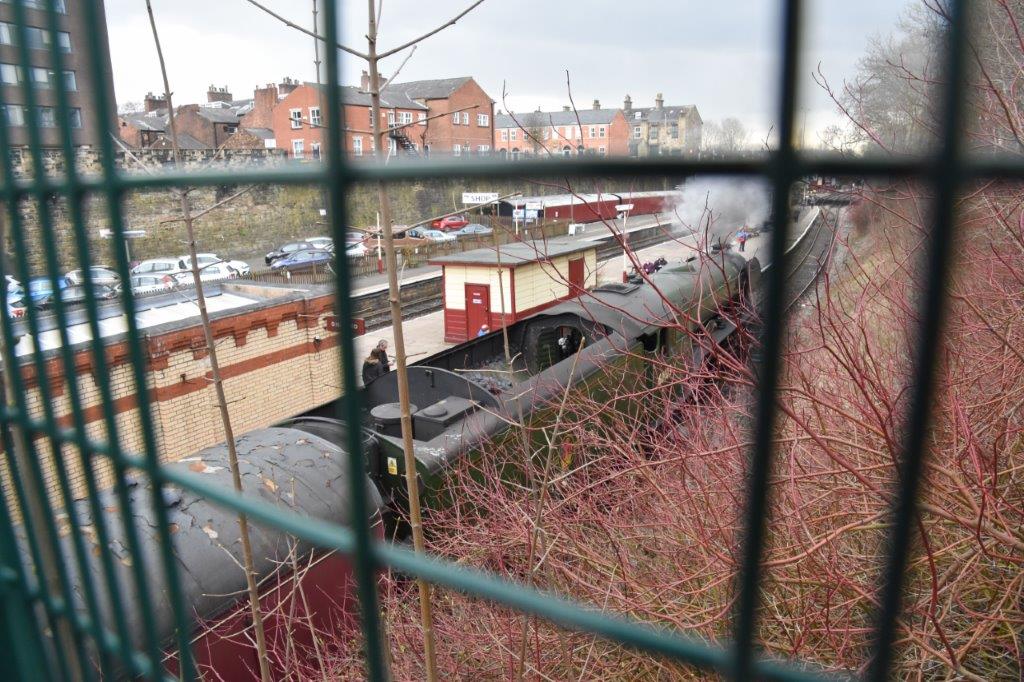
Once the guide had finished his talk, we walked through the tender’s narrow corridor to the engine’s cab.
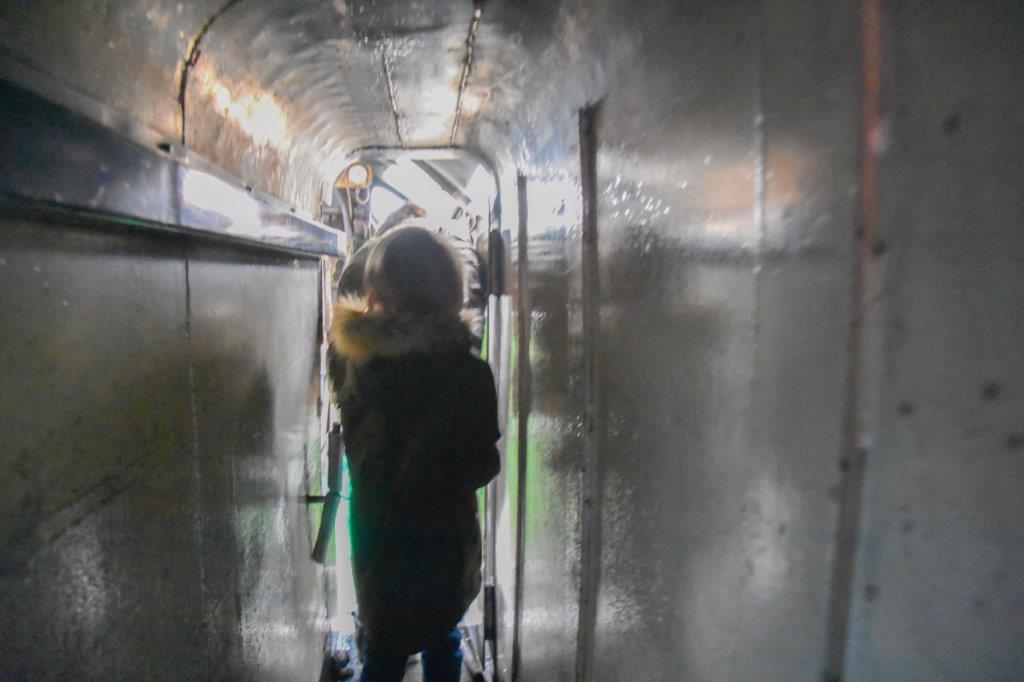
The cab was bigger than others I’ve seen and we all fitted in comfortably. I could see the flames in the fire box, filling the cab with warmth. Goobie was invited to stoke the fire with a shovelful of coal from the tender. He struggled under the weight of the heavy metal shovel and the engine driver helped him. He was given a lump of coal from the tender as a souvenir.
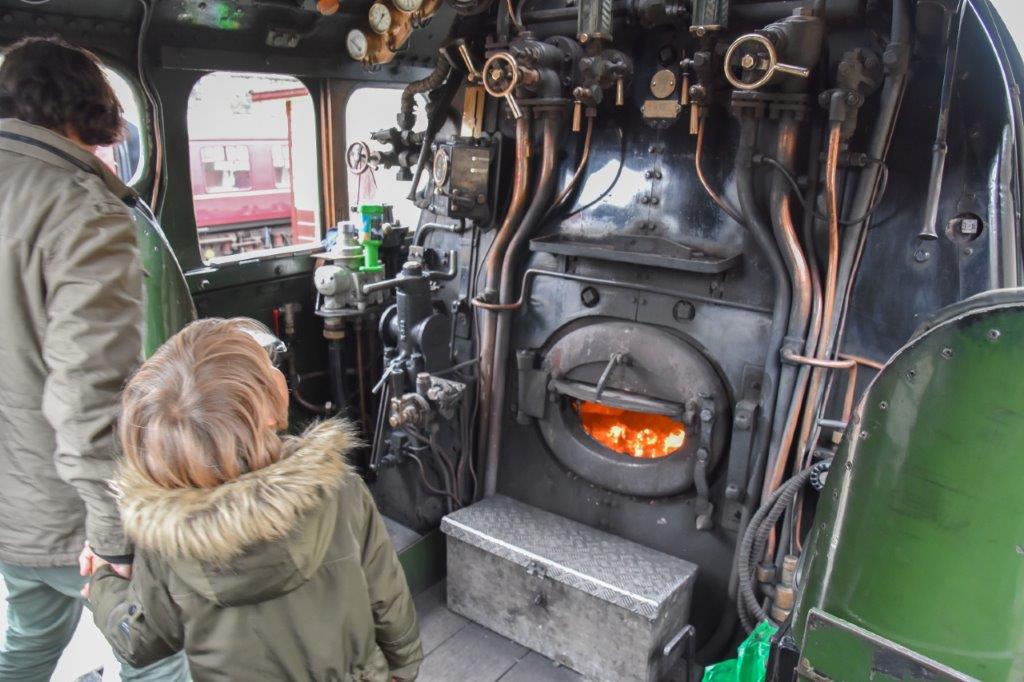
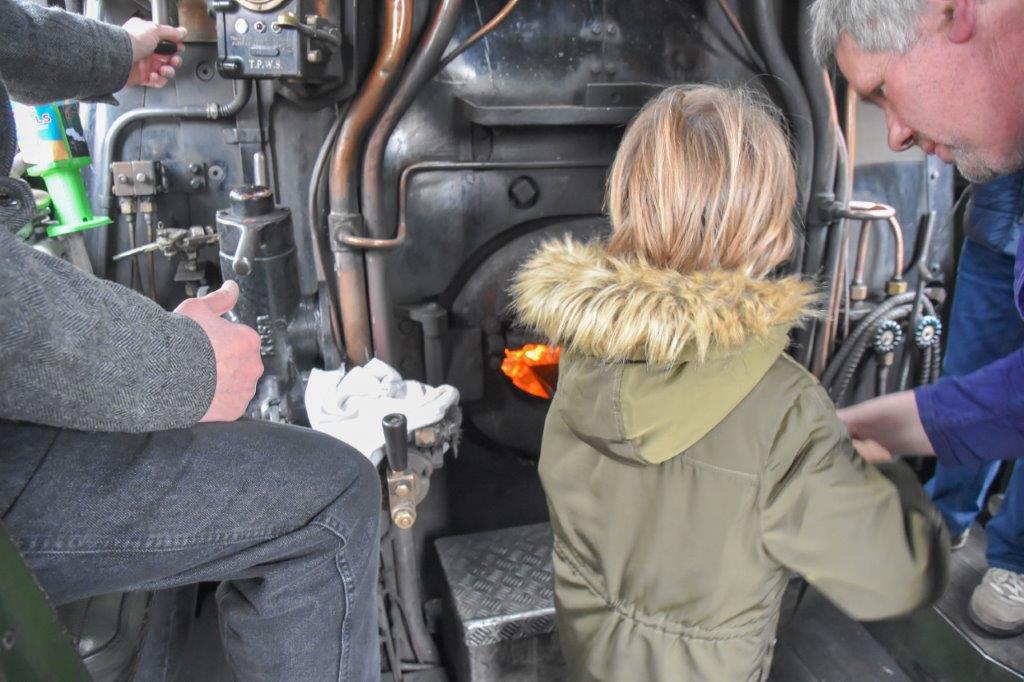
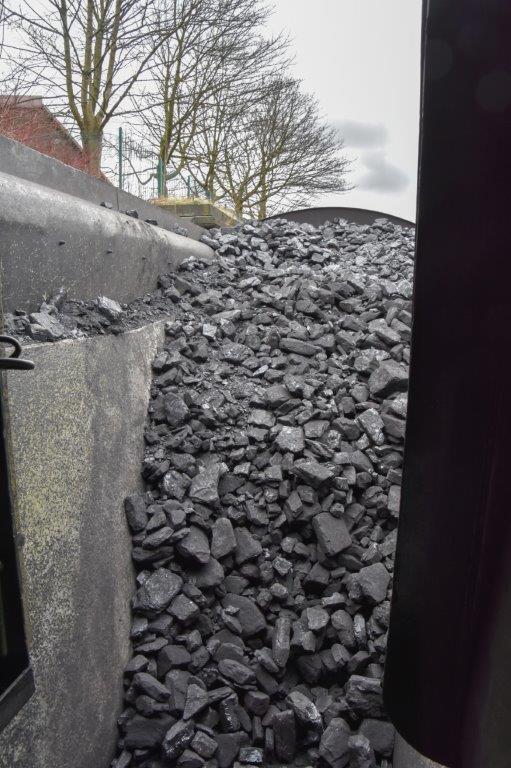
Goobie sat in the driver’s seat, pulled the whistle and enjoyed all the attention he was receiving from the driver. This was his dream come true.
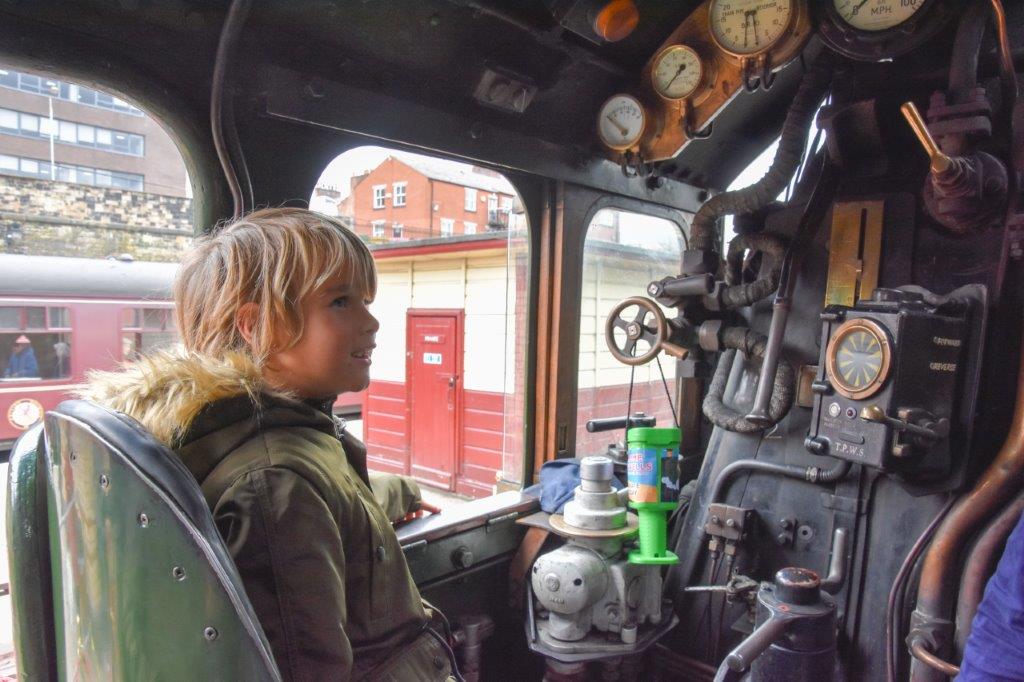
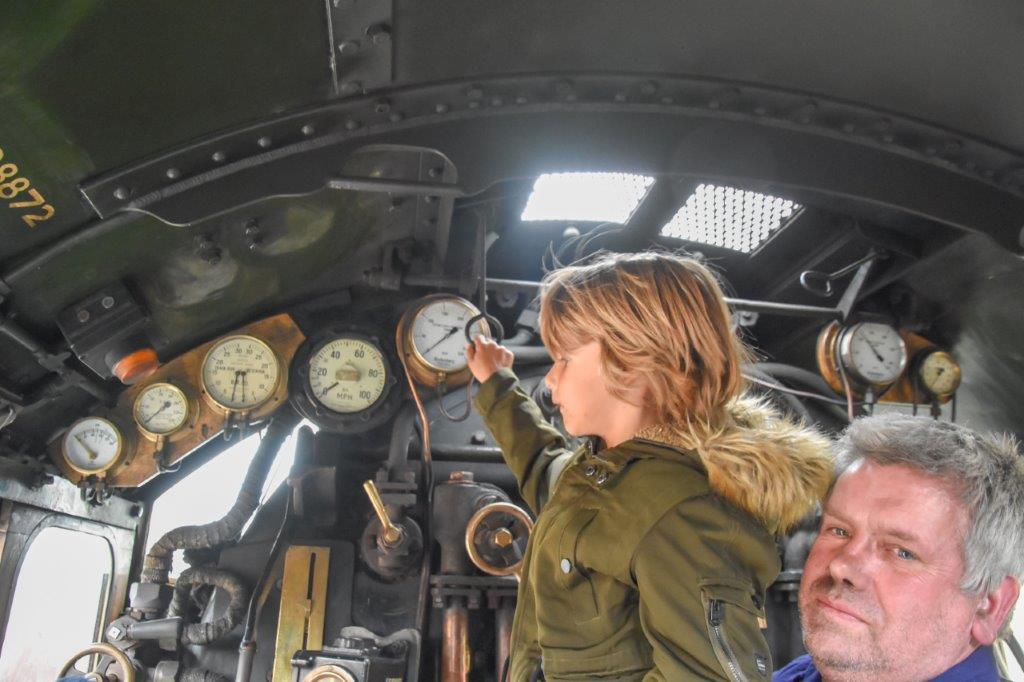
We stepped down from the cab and was approached by another volunteer worker who asked Goobie whether he’d had fun.
‘And did you know,’ he said to Goobie amiably, ‘that Tornado and The Flying Scotsman are related? They are both A1 class engines.’
‘No they aren’t!’ Goobie exclaimed to the poor chap. ‘Tornado is an A1. The Flying Scotsman is an A3.’
There was a pause. The guy looked sheepishly at me. ‘He’s right, actually.’
I was secretly proud and surprised at the same time. I’d never seen Goobie behave so confidently around complete strangers.
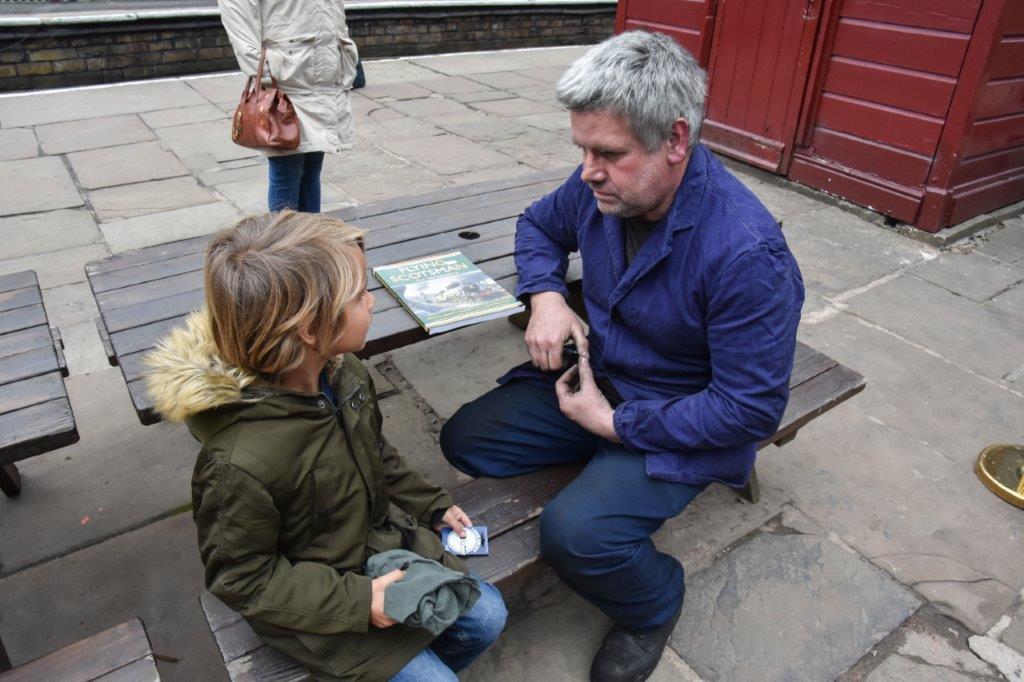
The 60-something guys who’d been on the tour with us came up and were joking around with Goobie. The driver appeared with a Flying Scotsman badge and glossy programme. He and the guide signed it. A gift from one enthusiast to the other.
And as I looked at Goobie surrounded by train enthusiasts 50 years his senior, I thought they aren’t really strangers at all. Despite the decades between them, he was one of them. Just a younger version.
A bit like Tornado and The Flying Scotsman, really.
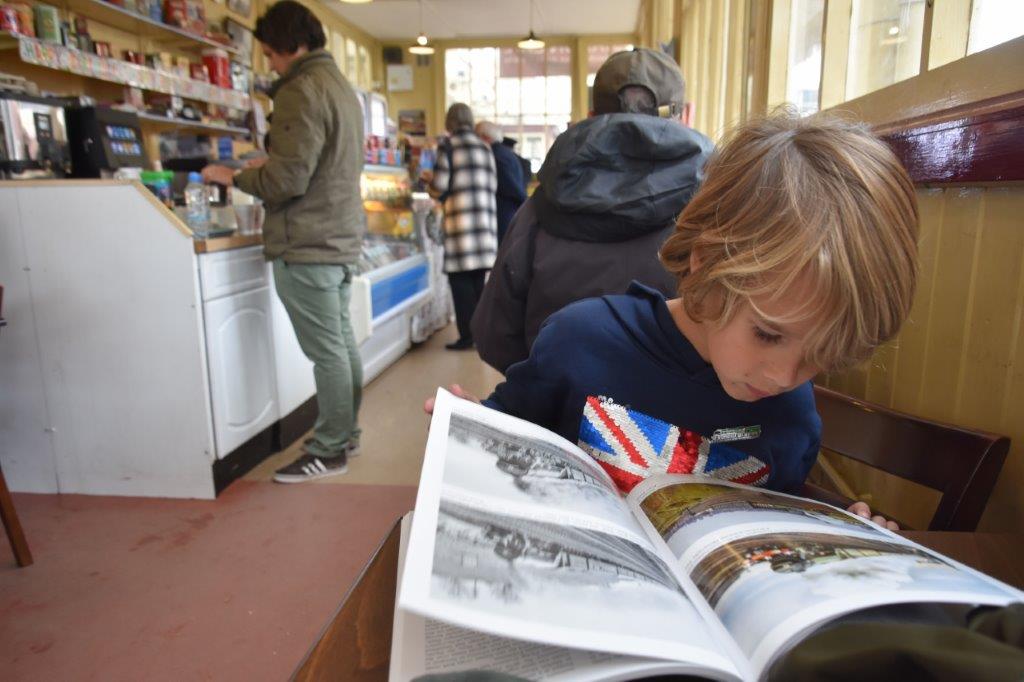

Categories
Recent Posts
Leave a Reply